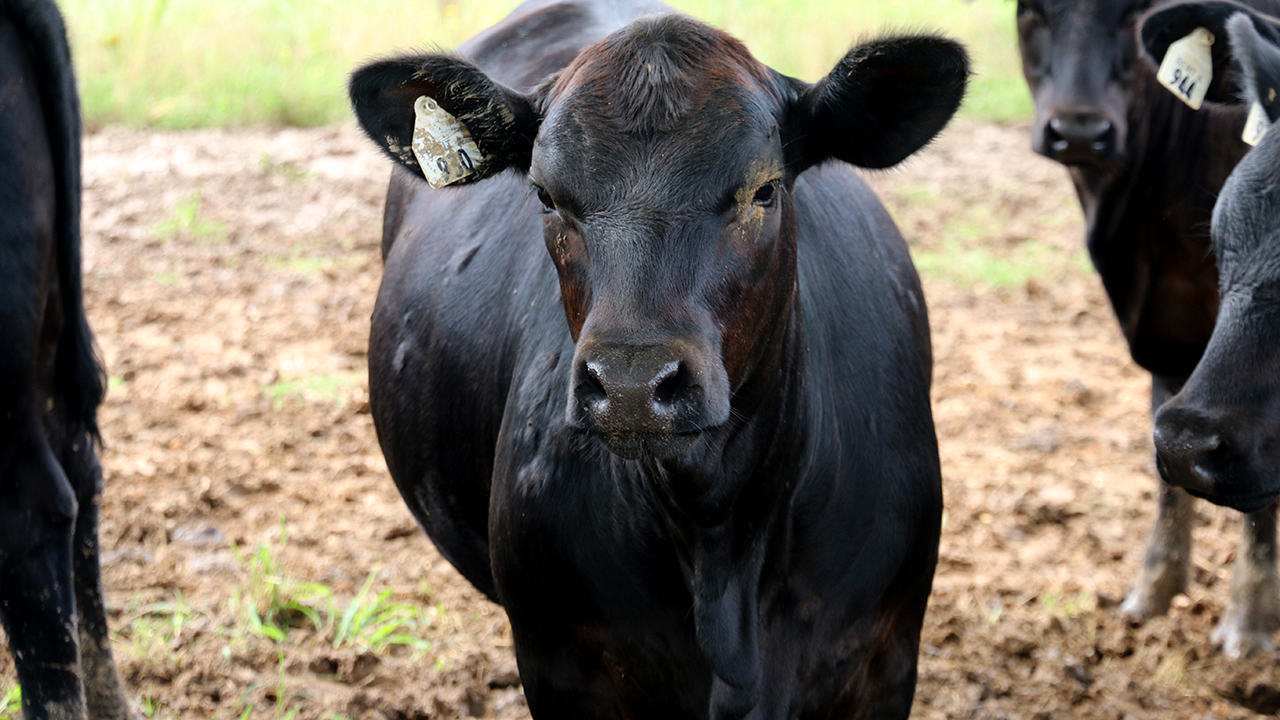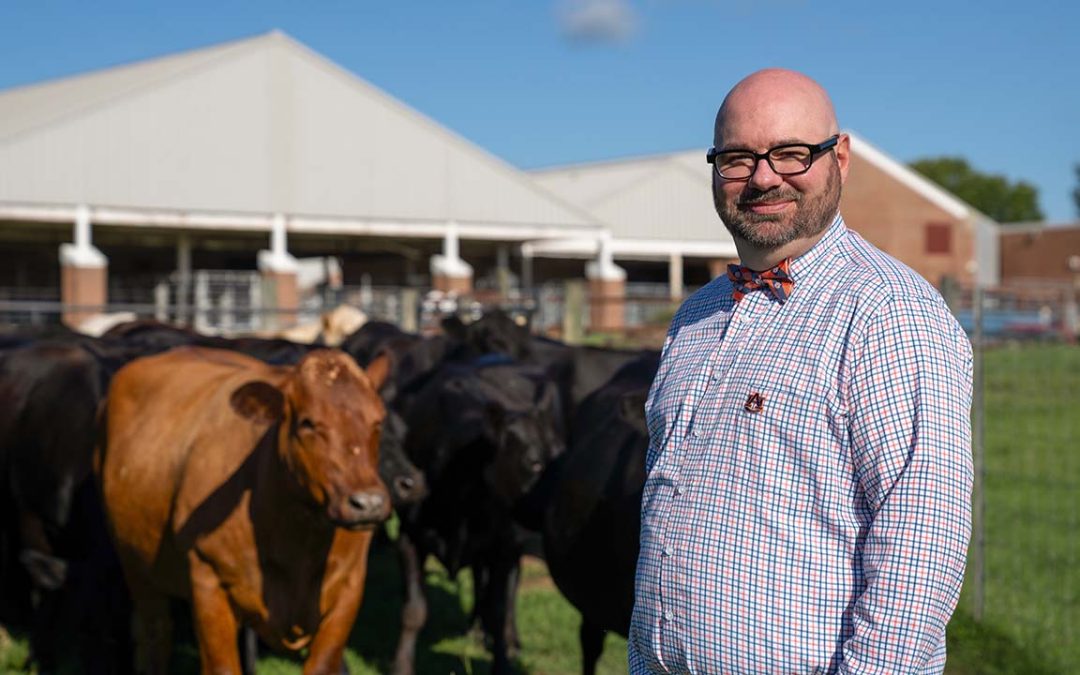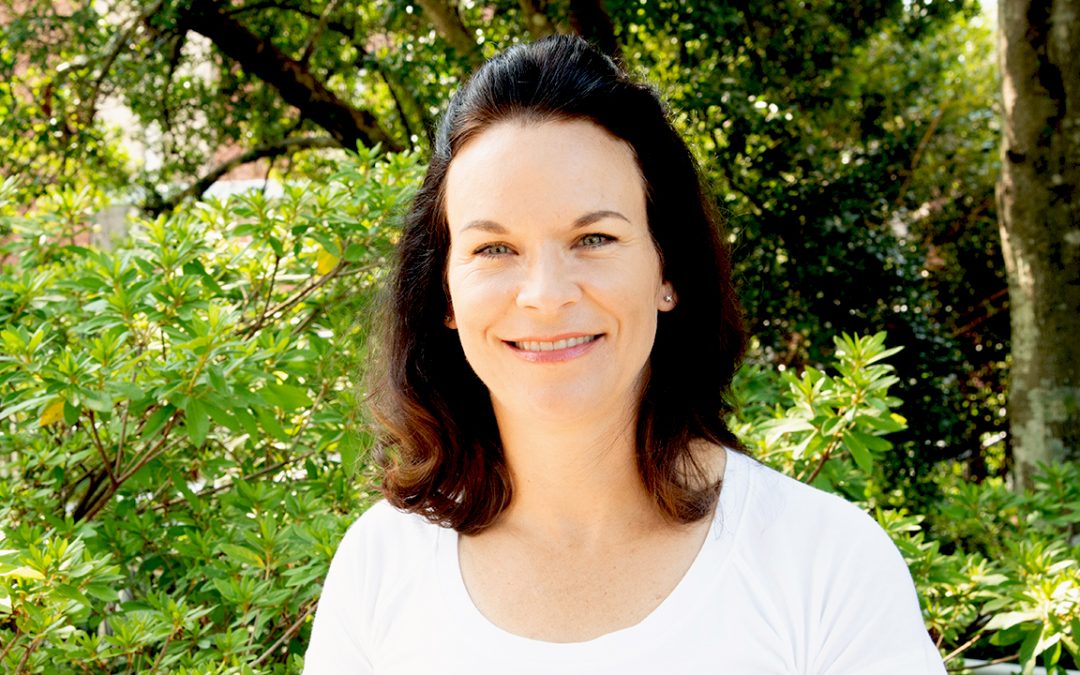By Paul Hollis / Jun 23, 2020 3:21:41 PM
College of Agriculture, Feature
Unique for its quick results and Alabama-specific focus, Auburn’s Production Agriculture Research (PAR) grants program — funded by the Alabama Agricultural Experiment Station — is helping the state’s farmers at a time when it’s needed the most.
Caught between unresolved tariff wars and a catastrophic pandemic, Alabama farmers are desperately seeking ways to keep their operations afloat, and the research being generated by PAR grants is providing timely solutions to many of their production issues.
Between 2017 and 2019, 30 proposals have been funded with a total investment of $1.35 million, said Henry Fadamiro, associate dean for research in the College of Agriculture and associate director of the Alabama Agricultural Experiment Station (AAES).
“Although many of these research projects are ongoing, some already have resulted in significant outcomes and impacts and have supported training of several undergraduate and graduate student researchers,” Fadamiro said.
Many of the projects, he said, combine research and extension. “It’s applied research in the sense that it will address a practical problem right away,” Fadamiro said. “Most of this work is funded over two years with immediate deliverables, so the impact can more readily be documented for farmers and for Alabama agriculture.”
Twenty-seven PAR proposals were received for 2020.
“Results from approved projects have been used to leverage at least 10 times the total investment in extramural funding from various sources, including federal agencies, foundations and the agriculture industry since the program’s inception in 2017.
“Considering the significant impacts of PAR projects in Alabama and beyond, the AAES continues to invest in the program to improve agriculture, quality of life and well-being in Alabama,” Fadamiro said.
The benefits from PAR grants could not be coming at a better time for the state’s farmers, said Brian Hardin, director of Governmental & Agricultural Programs for the Alabama Farmers Federation.
“The negative impacts farmers and agriculture have faced related to COVID-19 are reminders of the critical need for research that will improve farmers’ profitability,” Hardin said. “This valuable research has been especially important over the past several years due to the tough market conditions our producers have faced.”
Typically, PAR proposals are reviewed by the directors of the Alabama Farmers Federation for relevance to production agriculture issues in Alabama. Proposals also are reviewed by a technical panel of peer-reviewers.
“The Alabama Farmers Federation is appreciative of the partnership with the College of Agriculture and the AAES,” Hardin said. “Input into the PAR program helps us provide perspective about what is most valuable to farmers and landowners. We hope the results of these research projects will help farmers be more efficient by increasing yields, reducing inputs and adopting proven practices.”
PAR grants currently are focusing on a full range of agricultural issues, including a major threat to tomato and pepper production in Alabama and throughout the Southeast: bacterial spot.
“By surveying pathogens on tomato and pepper throughout Alabama, we have a clear understanding now of pathogen diversity,” said Neha Potnis, assistant professor in the Department of Entomology & Plant Pathology. “We found new pathogen lineages that are not prevalent in other Southeastern U.S. regions, along with associated novel virulence factors.”
A second goal of the research was identifying two pepper genotypes that show novel resistance against bacterial spot and showed promising results in greenhouse and field trials.
“We also have developed excellent communication with growers over the past three years working on this project and have begun assessing risk factors responsible for increased disease severity and pathogen diversity,” Potnis said.
Funding in addition to PAR include $221,000 from the Foundation for Food and Agriculture Research and $3.2 million (shared with other institutions) from USDA-SCRI.
Another project that began as a PAR grant is the development of an environmental phosphorus loss risk assessment tool for applying poultry manure on Alabama agricultural lands. Proposed government regulations could put stringent restrictions on the application of poultry litter on many of the state’s farmlands.
“Direct adoption of these standards without science-based evidence for Alabama soils not only will hurt crop yield but also could severely affect the state’s poultry industry,” said Rishi Prasad, assistant professor and extension specialist in the Department of Crop, Soil & Environmental Sciences.
Prasad and other researchers investigated whether Alabama farmlands that have received poultry litter in the past are acting as a source of phosphorus to the environment, mainly bodies of water. Alabama soils are highly weathered and have great capacity to fix phosphorus and make it unavailable for plant intake. This necessitates the addition of phosphorus either through poultry litter or phosphorus fertilizers.
“An extensive soil sampling was conducted throughout the state to understand the level of phosphorus on Alabama farmlands,” Prasad said. “Total acreage impacted through this project is expected to be greater than 32,000.”
Results of the sampling showed that current soil tests used in Alabama are not effective for environmental phosphorus loss risk assessment purposes. Also, the soils in lower depths are acting as a source of phosphorus whereas soils in the top surface are acting as a phosphorus source to the environment.
“We are developing a decision support tool for phosphorus risk assessment that can inform producers if their soils are acting as a source of phosphorus and if additional phosphorus is required to sustain or improve yield,” Prasad said.
PAR grant research also is focusing on target spot, a disease that has emerged as a major threat to Southeastern cotton acreage. Current management practices include applying fungicides.
“There are large knowledge gaps in target spot’s source, survival, spread, disease epidemiology and the virulence of pathogens across both cotton and soybeans,” said Jenny Koebernick, assistant professor in the Department of Crop, Soil & Environmental Sciences.
The objectives of the project — both of which have been accomplished — were to develop a growth chamber screening protocol to identify target spot resistance and to determine if the disease can transfer across cotton and soybeans. It was confirmed that soybean can be infected with cotton isolates of target spot.
These project results were used to leverage $375,000 (shared with other institutions) from the United Soybean Board.
PAR grants also have served as the initial funding for several important animal studies. One of these is evaluating nitrogen delivery methods for stocker cattle grazing on annual ryegrass.
“Nitrogen fertilizer represents the single greatest variable-input cost of forage production for stocker cattle production,” said Russ Muntifering, professor in the Department of Animal Sciences. “Alternatives to nitrogen fertilizer that can support comparable or superior animal performance and decrease input costs are needed to ensure sustainability and profitability of stocker cattle production from grazed forage.”
Results of the three-year project demonstrate that precision supplementation of grazing stocker cattle with select high-protein feedstuffs can consistently maintain or improve cattle liveweight gain, pasture stocking densities and steer-grazing days compared with conventionally fertilized annual ryegrass or annual ryegrass interseeded with regionally adapted annual clover varieties.
The research was funded by an additional $50,000 from the Alabama Cattlemen’s Association, Ridley Block Operations and the Wax Company LLC.
With an eye toward sustainability, researchers are using PAR grant funding as a foundation to develop methods for efficient production of high-level biobutanol.
“U.S. pulp and paper industries produce approximately 8.5 million dry tons per year of paper mill sludge,” said Yi Wang, assistant professor of Biosystems Engineering. “The traditional landfill approach is becoming increasingly difficult and costly to construct and operate because of more stringent regulations, diminishing land availability and public opposition. In this project, we focus on converting paper mill sludge to value-added biofuels, biochemicals and aquafeed.”
Auburn’s initial funding leveraged a $500,000 grant from USDA-NIFA for this research.
Considering that Alabama farmland is under-irrigated, especially when compared with its sister states of Georgia and Mississippi, researchers have used an initial PAR grant to increase the adoption of climate and water-smart irrigation practices among the state’s farmers.
As a result of the work, several solutions, technologies and innovations have been developed and adopted by growers, said Brenda Ortiz, extension specialist and professor in the Department of Crop, Soil & Environmental Sciences.
“This project has been instrumental in increasing farmers’ and crop consultants’ awareness of the benefits of implementing smart irrigation water management practices, gaining knowledge of technologies that can benefit farmers in improving irrigation water management practices, and demonstrating how to implement smart irrigation water management practices and use technology to manage irrigation water,” Ortiz said.





